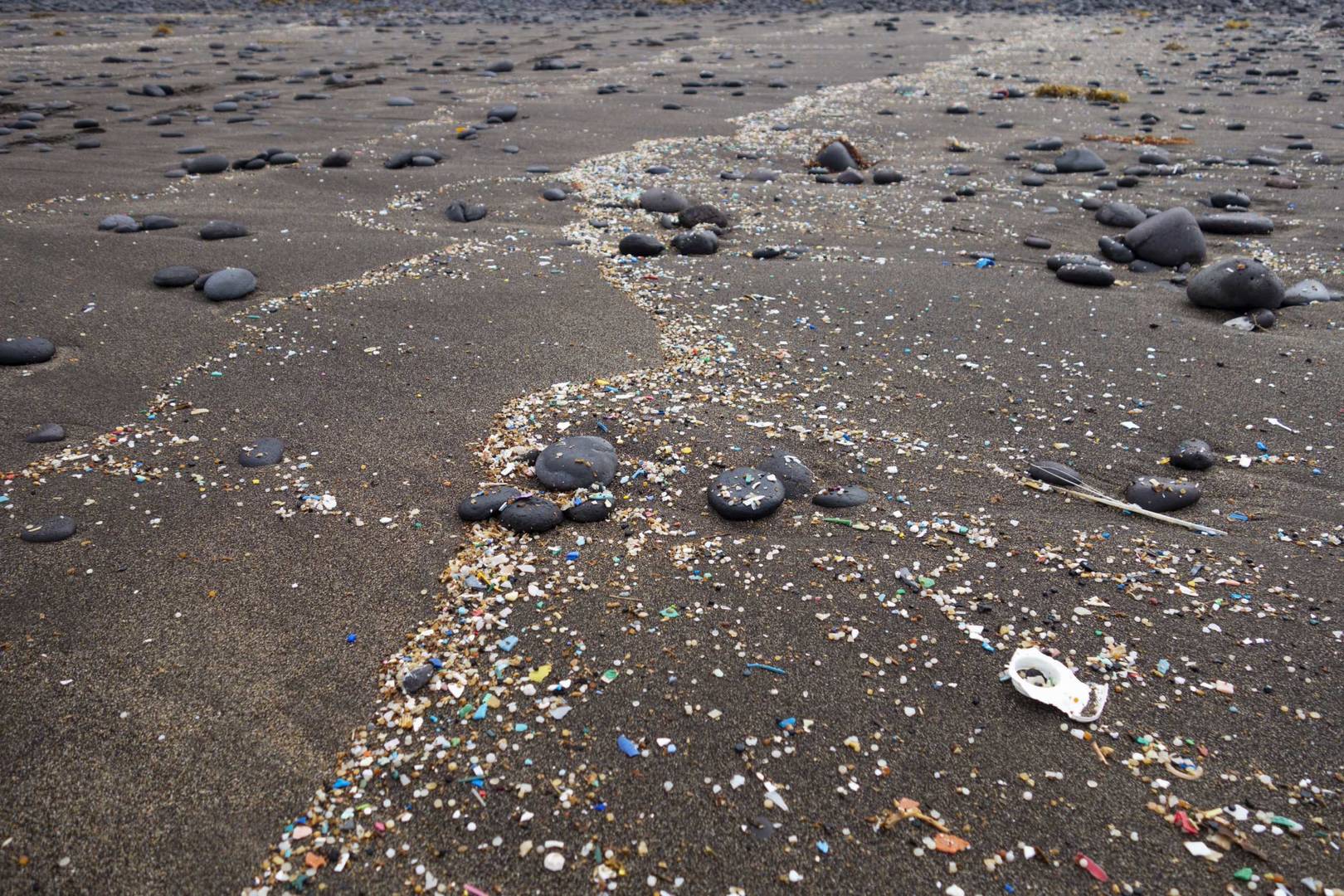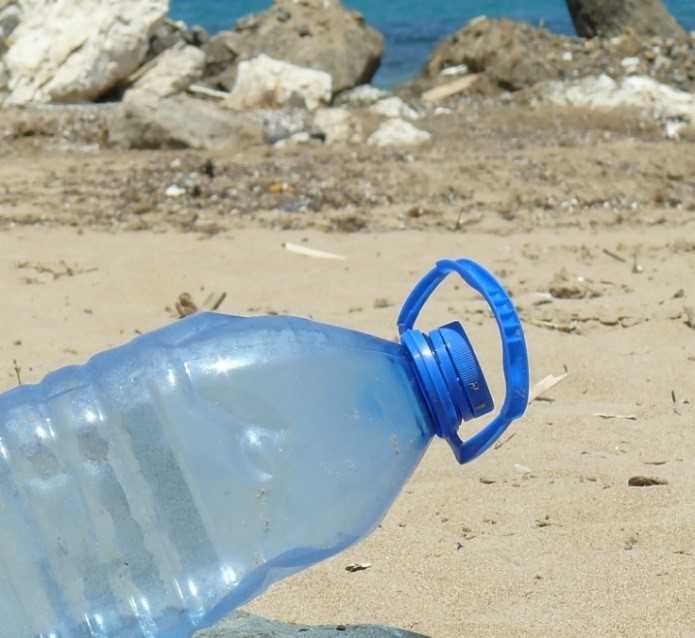EnviroMail 28 Canada
Microplastics – A Huge Problem on a Microscopic Scale
Several studies have shown that microplastic particles now contaminate the environment across the entirety of Earth.

What are Microplastics?
Several studies have shown that microplastic particles now contaminate the environment across the entirety of Earth. Microplastics are generally defined as plastic particles smaller than 5 mm, but the vast majority are < 1 mm. Primary microplastics such as pellets or micro beads are fabricated for addition to health and beauty products like cosmetics, toothpaste, and cleansers. Secondary microplastics originate as consumer products such as bottles, bags, packaging, textiles (fibers), and tires, which degrade over time into smaller and smaller particles. Microplastics make their way into water systems which cause their spread and deposition across the globe. Recent awareness of the global extent of microplastic contamination has led to an increased focus on the harmful effects of microplastics on marine organisms and their potential effects on humans.
A Growing Environmental Problem
Small pieces of plastic were first reported in the marine environment in 1972 in the Sargasso Sea in the North Atlantic Ocean1. The term microplastics was later popularized by Richard Thompson et al. in 20042. Since then, microplastics have been found in virtually all marine geographic areas on earth3. As of 2016, our oceans contained an estimated 150 million tonnes of plastic, increasing by eight million tonnes each year, the majority comprised of packaging materials4. Microplastic particles tend to be of similar size as plankton, so filter feeders such as oysters, clams, many fish, and some birds can ingest them, introducing them to the food chain.

Single-use plastics - a major source of microplastic contaminants.
Are Microplastics Dangerous to Human Health?
In June 2019, a study published in Environmental Science and Technology5 found that humans, through food and inhalation, ingest up to 74,000 plastic particles per year. Plastic polymers are generally unreactive and chemically inert, and most microplastic particles simply pass through the body. However, risks may be posed by additives within plastics that give them special properties, such as phthalates (plasticizers), biocides (silver, triclosan), brominated flame retardants, dyes, and pigments. Some of these additives are toxic or even carcinogenic.
Microplastics can also absorb chemical pollutants that can be incorporated after ingestion. Much more research is needed to understand the potential for human health risks from microplastics.
Laboratory Analysis of Microplastics by Micro-FTIR
ALS offers state-of-the-art testing services for microplastics in a wide variety of environmental sample matrices using µ-FTIR (micro – Fourier Transform Infrared spectroscopy). Advantages of µ-FTIR analysis are that the polymer type of each detected plastic particle is definitively identified, and that very small particle sizes can be measured. All major plastic polymer types can be detected and quantified by this method – up to 60 different polymers can be conclusively identified by infrared spectral matching.
Laboratory test results provide the number of microplastic particles per volume or weight of sample, together with identified polymer types. The total mass of plastics per sample can be calculated and reported if requested. For drinking waters, microplastic particles are quantified within the range of 20 µm – 5 mm, except for black particles (e.g. from degraded tires), which are detected down to 40 µm. For more complex matrices (see Table 1), microplastic particles are quantified within the range of 40 µm – 5 mm.
ALS has developed customized µ-FTIR microplastics sample preparation and analysis methods for drinking water, wastewater, soil, sediment, sludge, biota, and various food products. Effective and rigorous sample preparation techniques are crucial for microplastics testing, with many steps required to isolate microscopic plastic materials from sample matrix, and to eliminate or minimize interfering particles and organic matter.
Preparation of drinking water is relatively simple, requiring only wire-mesh filtration. Preparation of wastewater, sediment, sludge, and biota samples is complex, requiring steps such as oxidation with hydrogen peroxide and/or nitric acid, enzymatic treatment, oxidation with Fenton reagent, flotation / density separation (using zinc chloride solution), filtration, and physical concentration.

Figure 1. Analysis Steps for µ-FTIR Microplastics Methods
Sampling Requirements and Challenges
Sample collection for microplastics analysis requires plastic-free or low-plastic working conditions, using metal or glass as alternatives to common plastic materials. For biota samples, analysis is normally conducted on intestinal organs; dissection must be done on a glass plate, with no exposure to plastics. Biota samples must be frozen prior to submission to the lab. Required sample amounts by matrix for microplastics tests offered by ALS are provided in Table 1, together with routine Limits of Reporting (LORs).
Please contact your ALS Canada client services representative for more information. Please note that ALS microplastics testing services are considered semi-quantitative and qualitative in nature; although our Quality Management Systems are accredited to the ISO 17025 quality standard, our specific microsplastics tests are not accredited.
Table 1. Sampling Requirements & Test Details
| Matrix | Test Method | Minimum Sample Amounts | Particle Detection Range | Limits of Reporting |
|---|---|---|---|---|
| Drinking Water | µ-FTIR | 1 L | 20 µm - 5 mm* | 5 particles/L |
| Wastewater | µ-FTIR | 500 mL | 40 µm - 5 mm | 25 particles/L |
| Soil/Sediment | µ-FTIR | 500 g† | 40 µm - 5 mm | 25 particles/100 g |
| Sludge | µ-FTIR | 500 g† | 40 µm - 5 mm | 25 particles/100 g |
* black particles in drinking water are quantified down to 40 µm
† wet weight
Please contact your ALS Account Manager or ALSWTInfo@alsglobal.com for any questions.
References:
- Edward J. Carpenter, K. L. Smith Jr., Plastics on the Sargasso Sea Surface, Science, 17 Mar 1972, pp. 1240-1241.
- Richard C. Thompson et al, Lost at Sea: Where Is All the Plastic? Science, 07 May 2004, Vol. 304, Issue 5672, pp. 838.
- A. Lusher, V. Tirelli, I. O’Connor et al, Microplastics in Arctic polar waters: the first reported values of particles in surface and sub-surface samples. Sci Rep 5, 14947 (2015).
- World Economic Forum, Ellen MacArthur Foundation and McKinsey & Company, The New Plastics Economy — Rethinking the future of plastics (2016, http://www.ellenmacarthurfoundation.org/publications).
- Kieran D. Cox et al, Human Consumption of Microplastics, Environmental Science & Technology, 2019 53 (12), pp. 7068-7074.





















































